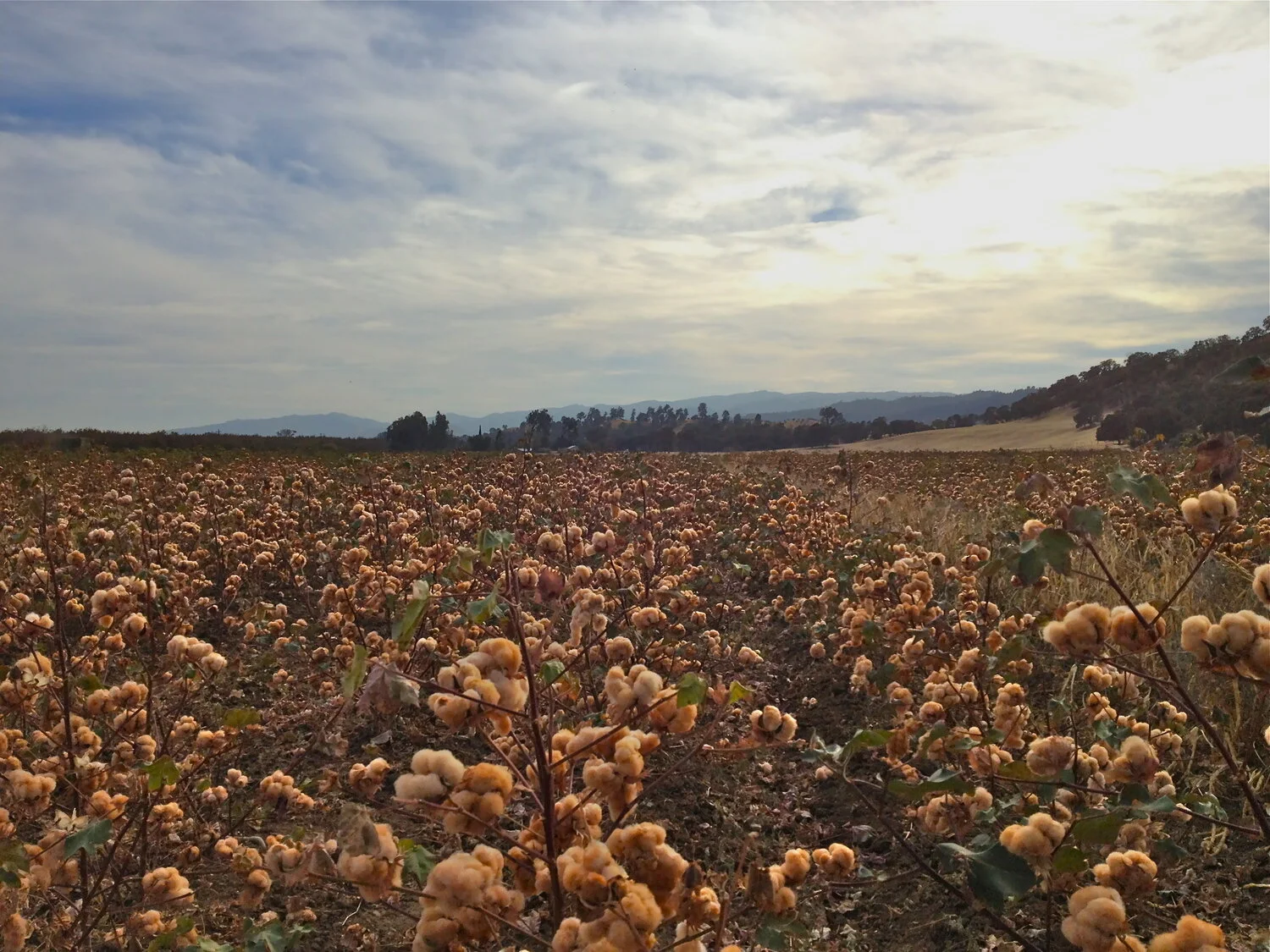Growing Colored Cotton: Sally Fox
Sally Fox’s California farm.
Early last month, CSIRO (Australia's national science agency) announced what has been lauded as the first process invented to grow colored cotton. Australian scientists claimed that their genetically modified “discovery” would help lower the carbon footprint of cotton as the fiber wouldn’t require any dyeing, therefore less water usage and the foregoing of toxic chemicals. Sustainable expert, author and journalist Elizabeth Cline swiftly came into debunk the entire narrative, writing in Forbes that “colorful cotton is nothing new. After thousands of years in cultivation, it became the biggest sustainable fashion trend of the early 1990s.” She points out that the practice has actually been employed by Native Americans in Central and South America for centuries before it was even harnessed for clothing production in the 20th century.
“FoxFibre® Wash Analysis” chart
Danu Organic’s “Equatorial Wrap” in Undyed Colorganic® by Sally Fox.
The woman behind this colorful cotton boom in the 90’s? Sally Fox. As sustainable fashion became popular during the time, Sally trademarked the cotton in brown and green hues which she had been breeding with the launch of Foxfibre®. “Young eco-fashion followers might not realize it, but sustainable apparel was the ‘first global fashion trend of the 1990s,’” Cline explains. In just a few years she grew a $10 million dollar business which partnered with denim giant Levi’s and had waitlists miles long. Sally’s California-grown cotton was (and still is) organically grown, bred to be pest-resistant, and with color that only deepens as the fiber is continuously washed. While undeniably impressive, Foxfibre®’s celebrity was short-lived however, once traditional cotton farmers tried to squash competition and offshoring took over. Today, she continues to breed and grow colored cotton, just at a smaller scale. Sustainable brands like Danu Organic and American Blossom Linens create clothing and bedding with her fiber, while home spinners purchase the cotton for their own use. It’s becoming increasingly clear that the sustainable trends which are taking over the industry today are nothing new. Can we learn from the past, from those who have come before us, as we move towards a better fashion future?



